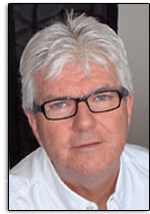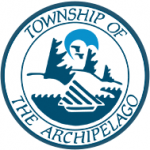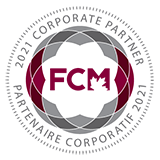This is the story of a major city determined to be green.
On a busy road in the centre of Copenhagen, a string of green lights embedded in the bike path flashes the words Green Wave' to help cyclists avoid red traffic lights. This system responds to cycling conditions and is currently developing apps for smartphones and a system that can automatically give groups of five or more cyclists' right of way at intersections.
On a main road into this city of nearly 1.2 million people, truck drivers can see on smart phones when the next light will change. In the city center, traffic officials are testing a number of approaches, including the one aimed at keeping trucks from making inordinate numbers of stops as they travel the major roads. The fuel savings are calculated to be substantial. Drivers slow and accelerate their rigs while keeping an eye on approaching traffic signals and on a bar graph on their smartphone that indicates how soon the light will change.
In a nearby suburb, new LED streetlights brighten only as vehicles approach and then dim after the traffic has cleared the zone.
The city is also testing systems to prioritize buses or bikes at intersections during certain times and has installed one that flashes a warning to truck drivers in a right-turn lane when cyclists are present or approaching.
However, some privacy advocates claim the system borders on individual monitoring of a person's activities and therefore an infringement on their rights. This will likely be tested in court one day.
These are but a few innovations aimed at cutting the use of fossil fuels and reducing gridlock. The installations are part of a growing wireless network of streetlamps and sensors that officials hope will succeed in meeting its goal of becoming the world's first carbon-neutral city by 2025.
Researchers today do not doubt that there is a connection between rising carbon dioxide levels in the atmosphere as a result of human activity and rising temperatures here on earth. It is difficult to make precise calculations of the future level of greenhouse gases (GHGs) in the atmosphere and, by extension, the temperature rises and climate change of the future.
The capital's Climate Adaptation initiative is designed to meet these challenges now by investing in a flexible approach to adaptation developed gradually over the coming years. It must not only focus on minimizing the risks in future climate change but also take advantage of the work to improve overall quality of life in the city. Flexible solutions are the order of business - where water and heat management works alongside urban planning and design development of recreational areas.
The plan adopts a development scenario in line with the Special Report on Emissions Scenarios (SRES) A2 segment of the UN's Intergovernmental Panel on Climate Change (IPCC).* This is a projection of how the climate will change in the future. It assumes that the global mean temperature will rise by approximately three degrees over the course of the 21st century and includes the reporting that has been in play since the fifteenth session of the Conference of the Parties (COP15) on limiting emissions. On top of this, the latest calculations and registrations of ice and snow melting show that substantially greater melting is taking place than has been assumed in earlier calculations. The consequences of increased melting are dire.
The city has used both the IPCC A1B and IPCC A2 scenarios as a basis for assessing future climate impacts. It makes virtually no difference in relation to a timeframe of 50 years, as the two scenarios are almost identical within this period. It is not until timeframe of 100 years that there is a significant difference between the two. But as there is great uncertainty over the future development of the climate, we should look at the direction in which development is moving as the projections become better. We should also regularly update the need for climate adaptation measures in accordance with the new knowledge we acquire on the climate of the future. Copenhagen's plan therefore does not recommend investments being made now in relation to long-term projections but instead recommends taking account of the need for climate-proofing in municipal planning so that urban development makes appropriate implementation of climate adaptation measures whenever possible.
Eventually, the city's network will serve other functions such as, alerting the sanitation department to empty the trash cans and informing bikers of the quietest or fastest route to their destinations. It's all made possible through an array of sensors embedded in the light fixtures that collect and feed data into software.
The system, though still in its early stages, has put the city on the leading edge of a global race to use public outdoor lighting as the framework of a vast sensory network capable of coordinating a host of functions and services. The advantages are many including: easing traffic congestion, better predicting where to apply salt and grit to thoroughfares before a snow or ice storm or, to serve as an early-warning alarm picking up on suspicious behaviour on a street corner.
Cities worldwide are expected to replace 50 million aging fixtures with LEDs over the next three years with roughly half of those in Europe. Some will be chosen simply to save energy and vastly extend bulb life but many others want to take full advantage of the LED's electronics, which are more conducive to wireless communication that other types of lighting.
Seeing the demand, technology and software companies are scrambling to serve the market. "It is now or never," said Munish Khetrapal, who helps lead the so-called smart city efforts at Cisco Systems. "If you lose the opportunity, it's going to take another 20 years."1
According to Mr. Khetrapal, Cisco, which has been pursuing smart city applications for years, is working with more than 100 cities.2
No one knows precisely how the world will develop technologically, in population terms, politically, etc., or how this will affect the climate, and whether this will be overlain by natural disasters for example. All figures and projections in the city's plan are thus chosen on the basis of best available knowledge on how the climate may perhaps develop and the consequences that will ensue.
Successful adaptation of the city to the climate of the future can only be achieved by considering key factors such as:
- Flexible adaptation
- Synergy with other planning ventures
- Use of current technologies
- An aesthetically pleasing city
- Climate adaptation in green spaces
- International and national cooperation
- Information on climate adaptation
- Intrinsic script for climate adaptation
The municipality's work on climate adaptation must promote integrated planning of the city and its infrastructure to the benefit of the population and the environment.
* The IPCC works continuously on describing the most likely scenarios for development in the global climate based on best available knowledge. The IPCC's projections for the development of the climate are relatively certain for the next 30 to 40 years, but after this period there is great uncertainty on how the climate will develop.
1 Cardwell, D. "Copenhagen Blazing Path to Carbon-Neutral Future."
The New York Times International Weekly (January 17-18, 2015): 8
2 Ibid.














